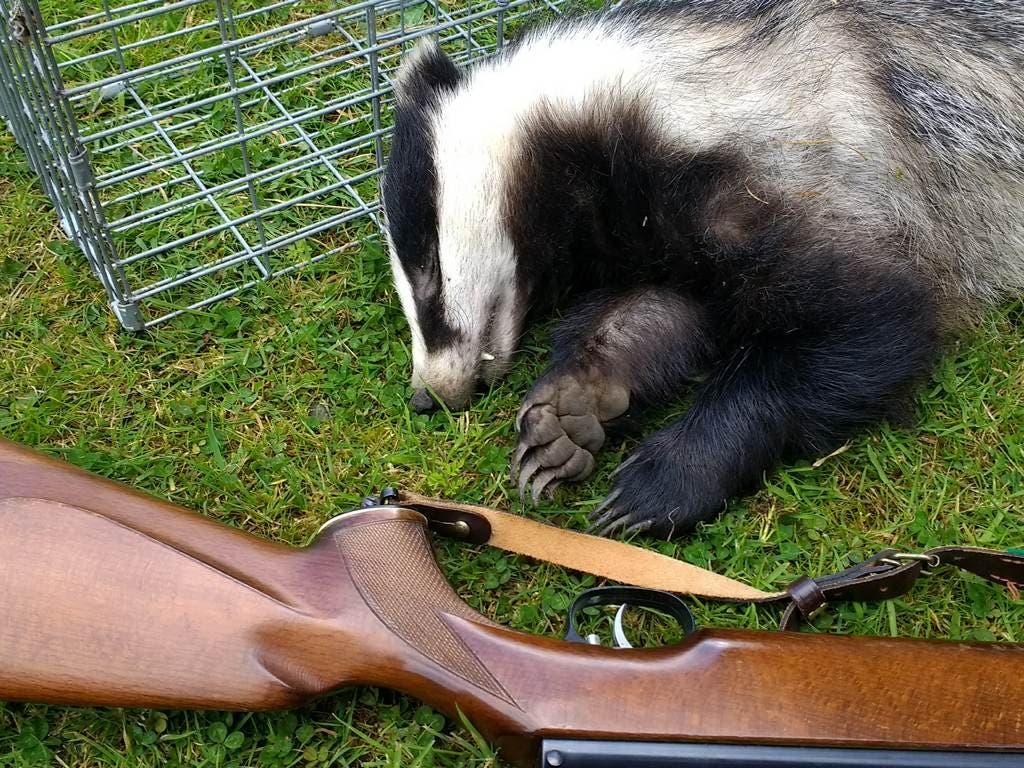Is the badger cull working?

What is badger culling?
Badger culling is the licensed killing of badgers, within a set area and timescale, in the UK used as a method of significantly reducing badger numbers in an attempt to stop the rise of Bovine TB (bTB) in cattle. The cull began in pilot areas Gloucester and Somerset in 2013, to a background of fierce debate and opposition.
Areas licenced to participate in the badger cull were extended in 2015 to include Dorset, and again in 2016 to include Cornwall, Devon and Herefordshire. More areas were licensed again in September 2017, meaning that the badger cull is now licensed to operate across 21 areas.
Cull areas are set minimum and maximum numbers to cull, it having been determined by the RBCT (Randomised Badger Control Trial) that for badger culling to have a noticeable impact on Bovine TB, 70% of badgers in the area must be culled. On trials, this percentage resulted in a reduction of the disease amongst cattle in areas tested, without completely decimating the badger population in one area.
 Courtesy of ecologist.org
Courtesy of ecologist.orgWhy are badgers being culled?
As said before, culling measures have been taken in the UK with a view to halting the spread of Bovine Tuberculosis (bTB) particularly amongst cattle and other farm animals. Bovine Tuberculosis is a highly infectious disease found in cattle and badgers which devastates many farming businesses each year, and according to the NFU, costs roughly £100 million a year.
It can also affect many other animals and humans too. Bovine TB is transmitted between cattle, between badgers, and from badgers to cattle, and cattle to badgers. According to Minette Batters of the NFU, ‘it is estimated that badgers contribute up to 50 per cent of cattle herd TB breakdowns’ in high-risk areas such as Gloucester and Somerset. The disease is commonly transmitted through contaminated food or water besides inhalation and contact. It is estimated that the occurrence of bTB in cattle has significantly increased since the 1980s. According to the Telegraph, ‘more than 42000’ infected cattle were slaughtered in 2017, due to bTB, and it is estimated that Bovine Tuberculosis in cattle costs taxpayers £100 million in compensation each year.
How many badgers have been culled?
Between 2013 (when the government policy was introduced) and 2018, it is estimated that roughly 67000 badgers have been culled in England.
Is the badger cull working?
As ever, the subject rouses much debate, so we will present to you the arguments from both angles.
Many experts accuse government ministers and officials of cherry-picking data to falsely inflate optimistic badger culling results. Former farming minister George Eustice was recently lambasted by various for saying that the cull was showing encouraging results in Gloucestershire and Somerset, while allegedly neglecting to mention a rise in bTB in Dorset since the beginning of the cull.
This case refers to one area out of 21 cull areas and represents statistics taken over a relatively small period of three years (as part of a 25-year TB eradication strategy) from the very beginning of the cull. Here, it is worth noting that the cull began in Gloucester and Somerset in 2013, while Dorset was not included as a cull area until 2015, so, statistics from Dorset may not be a fair representation of the effectiveness of the badger cull overall.
Some scientists say that culling could spread the disease further by disrupting badger populations, as badgers leave affected setts, travel more widely, transferring the infection to areas not so affected by TB in badgers. This is to a certain extent negated by the culls attempt to make use of ‘hard borders’ (this sounds horribly like Brexit) between cull areas, meaning rivers and roads that badgers can’t cross, to stop the ‘peturbation’ effect. However, the RBCT found that the perturbation effect still occurred when hard boundaries were in place.
The Zoological Society of London has claimed that there is no ‘firm evidence’ that the cull was working, with infection ‘not significantly different 'Meurig Raymond, then president of the NFU, in a letter to the Sunday Times in response to an article in 2016, puts forward a contrary view. To arguments that denounce the culls as not being based on solid evidence, he says this view ‘shows a complete lack of knowledge of the issue. The biggest scientific trial of its kind – the Randomised Badger Culling Trial – showed that culling badgers can have a positive impact on reducing bovine TB in cattle in areas where the disease is endemic.’ To support this Natural England’s Chief Scientist has said that ‘industry-led badger control continues to deliver the level of effectiveness required’.
An alternative to this includes badger vaccinations, which many farmers rightly argue would be an ineffective and costly procedure, with no evidence to confirm that it would have any benefit on bTB incidence in cattle, where the cull has been tested in trials led by the government.
Do badgers spread Bovine TB?
Many scientists and wildlife advocates favour more rigorous testing and restrictions on the movement of ‘at-risk’ cattle, as opposed to a cull, believing that cattle-to-cattle infection is the most common form of bTB infection, citing that badgers are only responsible for bTB infection in 6% of cattle herds.
In an independent review commissioned by Michael Gove, it was discovered that frequent trading of cattle and poor biosecurity is ‘severely hampering’ efforts to tackle bTB. It is thought that up to 50% of standard TB tests miss infections, meaning infected or at-risk cattle are moved around the country.
Restrictions on herd movement, however, are known to have crippling effects on farmers as they cannot trade and replace existing stock and maintain their business. Further to this, the NFU site ‘TB Free England’ gives an example of a farm operating with a closed herd (whereby all replacement stock is bred on that same farm) for more than 10 years, which was suddenly faced with several cattle testing positive for bTB. From this case, clearly something other than frequent herd movement is a factor in bTB infection.
The same site also makes another interesting point as to herd movement, suggesting that evidence has established that providing local wildlife ‘is not also harbouring the disease’, herd movement ‘doesn’t lead to a long-term TB problem’. They cite the example of Northumberland, where ‘pockets of bTB caused by cattle movements’ had occurred, but there is no evidence to show a ‘wildlife reservoir of disease’ in Northumberland, and as a result, the outbreak has been stamped out.

How do I protect my cattle from bTB?
For dairy and beef farmers concerned by the impact badgers may have on their cattle, there are several simple and inexpensive measures which can be taken to ensure that badgers do not access farm buildings and areas where cattle are grazing.
- Raise feed/water troughs, to approx. 90 cm high, these are attractive to badgers and could contaminate cattle sharing the troughs.
- Ensure doors to sheds fit well and are kept shut at night, this is when badgers are usually most active.
- Store feed in covered bins, prevents contamination from badgers accessing animal fodder.
- Fence of badger setts/latrines and sink grazing land fencing roughly 50 cm below ground level, which prevents badgers burrowing underneath. Make sure the fence is roughly 1.2 m high to limit the potential for access above ground.
- No gaps in walls/doors where badgers might otherwise have access. A gap should be no more than 7.5 cm wide if it is to stop badgers from entering.
- Gates – fit a galvanised sheet of metal to an existing gate to block off holes where badgers can enter. Remember to close all gates and doors, especially at night.
- If badgers are located on your farm and are causing problems, an application can be made to the Environment Agency (England) or Natural Resources Wales (Wales) for the sett to be moved. A licence can then be granted to do this.
Glossary:
- Biosecurity - procedures or measures designed to protect the population against harmful biological or biochemical substances.
- bTB – Bovine Tuberculosis
- RBCT – The Randomised Badger Culling Trial, Pilot Culls completed in 2013 to verify the effectiveness of a badger cull being enforced in high-risk areas.






